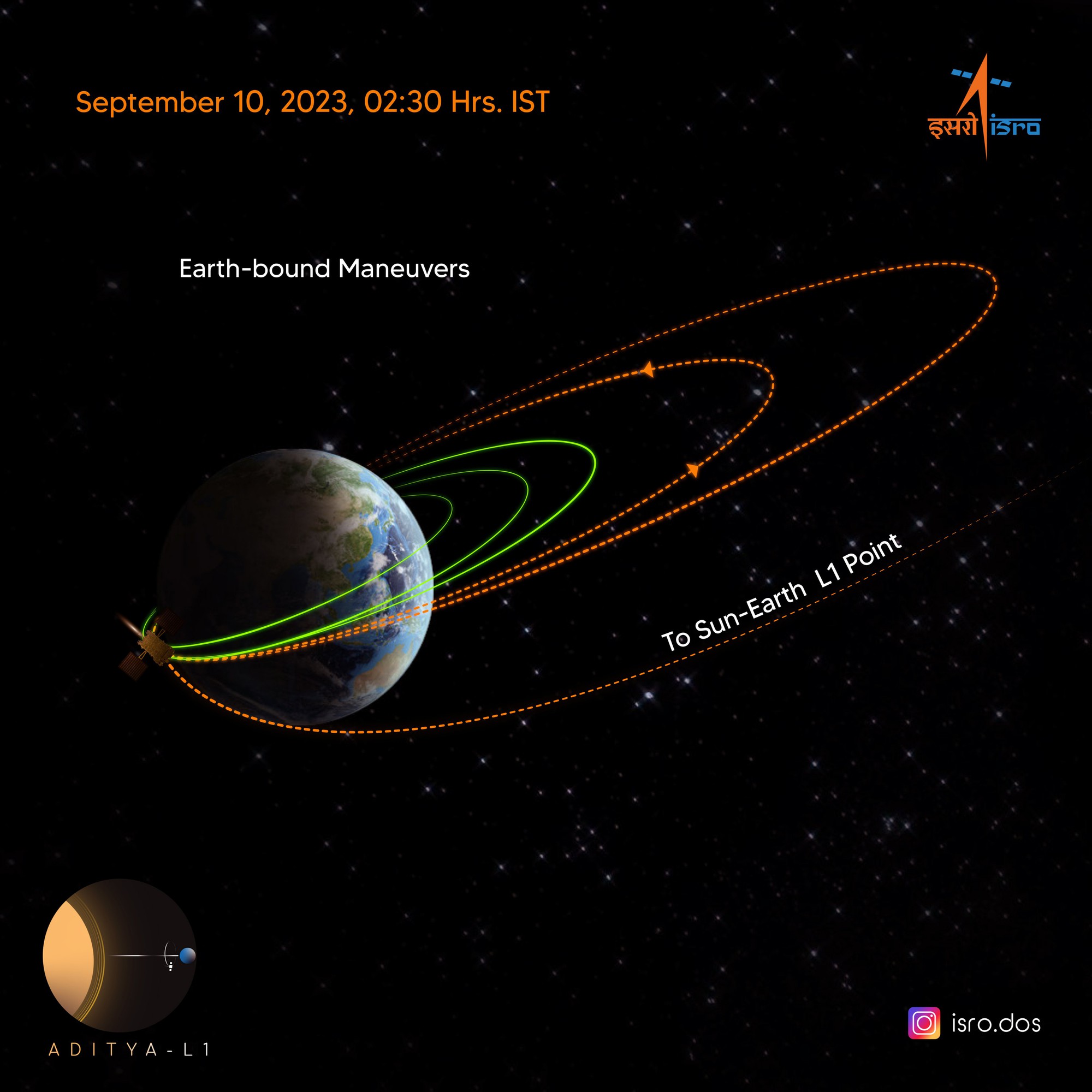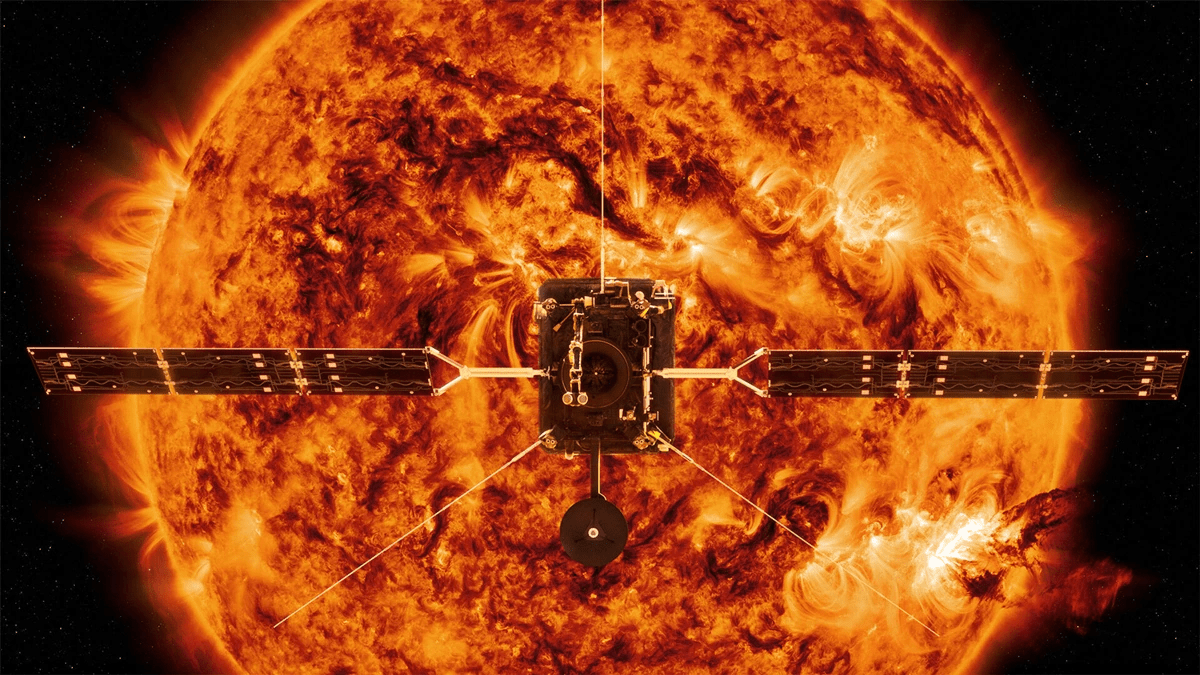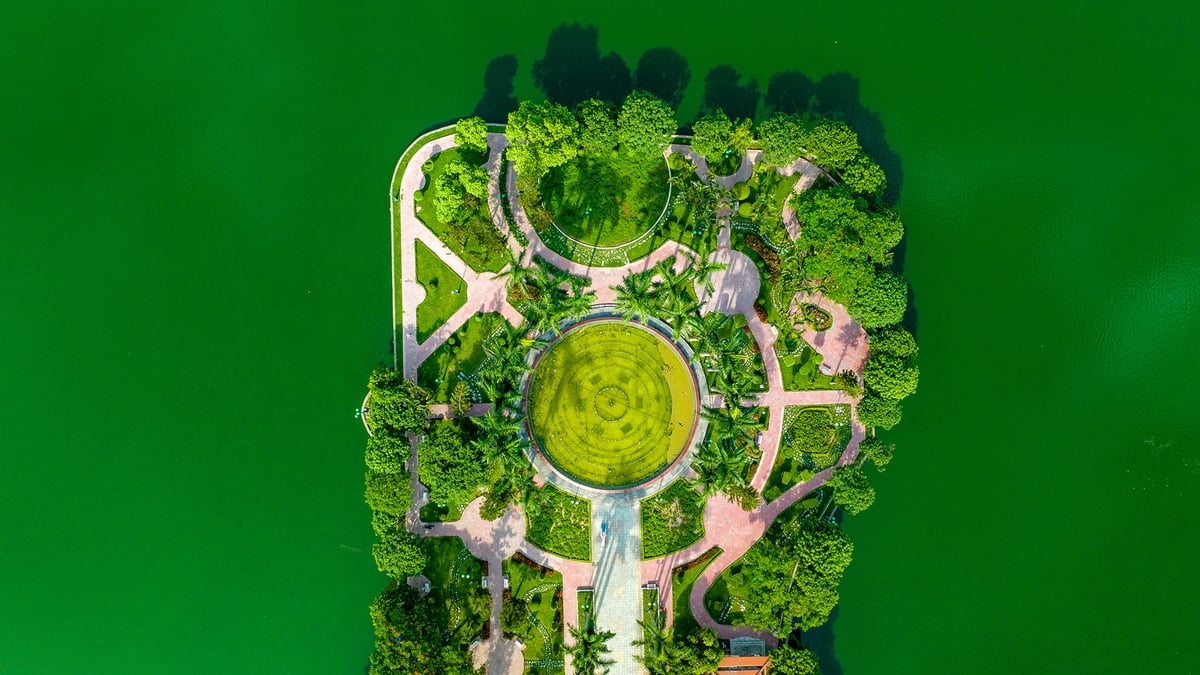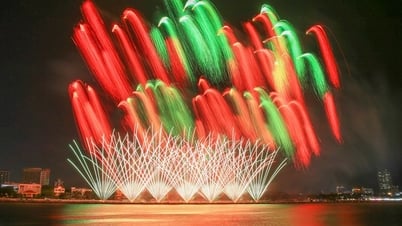Two days after India's Aditya-L1 solar probe was launched aboard the PSLV-C57 rocket, the Indian Space Research Organisation (ISRO) released the first images taken by the Aditya-L1 camera as the spacecraft made its way towards the Sun.
ISRO released these images in the form of a video posted on social network X (formerly Twitter) on September 4.
Watch video: Historic photo of Aditya-L1/ISRO solar probe
Historic image of the Aditya-L1/ISRO solar probe
One of the photos shows the Earth and the Moon in the same frame, with the Moon appearing much smaller than our planet.
The second photo is a "selfie" of the Aditya-L1 spacecraft, showing images of two of the seven scientific instruments on board to explore the mysteries of the Sun.
Aditya-L1 ship is about to reach the 'rendezvous point'
According to the latest news related to India's first solar mission announced by ISRO on September 10, the Aditya-L1 spacecraft has successfully completed its third flight around the Earth in an elliptical orbit, gradually approaching the stable orbit of the Sun-Earth Lagrangian Point 1 (L1 Point).
The new orbit achieved by the Aditya-L1 spacecraft is 296km x 71767km. ISRO ground stations at Mauritius, Bengaluru, SDSC-SHAR and Port Blair respectively tracked the spacecraft during this operation.
ISRO said that after a total of 5 orbits around the Earth, the Aditya-L1 spacecraft will reach Point L1 - where the gravitational pull of the Earth and the Sun is neutralized. This will help the spacecraft have stable conditions to observe and take pictures of the Sun.

As of September 10, the Aditya-L1 spacecraft has successfully completed its third flight around the Earth in an elliptical orbit. Source: ISRO
The fourth orbital flight of Aditya-L1 is expected to begin on September 15. All these processes are called Orbital Maneuvers.
According to scientists, orbital maneuvers are a routine procedure during spaceflight.
During this process, the orbit of the satellite/spacecraft is gradually increased using the propulsion system. This process will involve firing rockets and adjusting the angle.
To understand this process, take the example of a person on a swing. To make the swing go higher, a person must make moves that gradually increase the strength and height of the swing.
Once the Aditya L1 spacecraft reaches sufficient velocity, it will follow its intended path toward Point L1. Point L1 is 1.5 million kilometers from Earth in the direction of the Sun, or about 1% of the Earth-Sun distance.
ISRO said Aditya-L1 will neither land on the Sun nor come any closer to the Sun.
This strategic location (Point L1) will allow the Aditya-L1 spacecraft to continuously observe the Sun without being obstructed by eclipses or occultations, allowing scientists to study solar activities and their impact on space weather in real time.
The Great Mystery of the Sun
The main objectives of the Indian Solar Probe mission include studying the physical properties of the solar corona and its heating mechanism; solar wind; solar atmosphere...
The Sun as we know it today is a giant 'nuclear fusion furnace', consisting mainly of hydrogen (about 74% of its mass) and helium (about 24%), with traces of heavier elements.
The Sun's powerful gravitational pull governs the orbits and movements of the planets, moons, and countless other celestial bodies that orbit it.

The Sun is more than just a ball of fire. It is a complex, dynamic entity with many layers and a vibrant atmosphere.
At its core, temperatures reach 15 million degrees Celsius, where nuclear fusion reactions turn hydrogen into helium, releasing enormous amounts of energy. This energy, expressed as light and heat, radiates outward, sustaining life on Earth.
Surrounding the core are the radiative zone and the convective zone, through which energy gradually moves toward the surface. Above these layers is the visible surface of the Sun - the photosphere, which emits the sunlight we observe from Earth.
Beyond the photosphere, the Sun's atmosphere extends to the chromosphere and the outermost layer - the corona, where temperatures inexplicably soar to several million degrees Celsius.
With the Aditya-L1 spacecraft, Indian scientists are hoping to decipher the huge temperature difference between the corona and the surface and core of the Sun.
Source: India Today, Livemint
Source


















































![[Maritime News] Wan Hai Lines invests $150 million to buy 48,000 containers](https://vphoto.vietnam.vn/thumb/402x226/vietnam/resource/IMAGE/2025/6/20/c945a62aff624b4bb5c25e67e9bcc1cb)














![[Infographic] Party Committee of the Ministry of Culture, Sports and Tourism: Marks of the 2020 - 2025 term](https://vphoto.vietnam.vn/thumb/402x226/vietnam/resource/IMAGE/2025/6/22/058c9f95a9a54fcab13153cddc34435e)



























Comment (0)